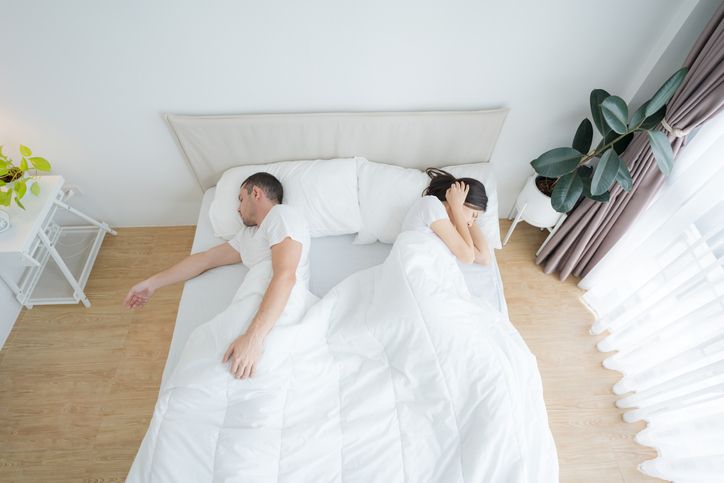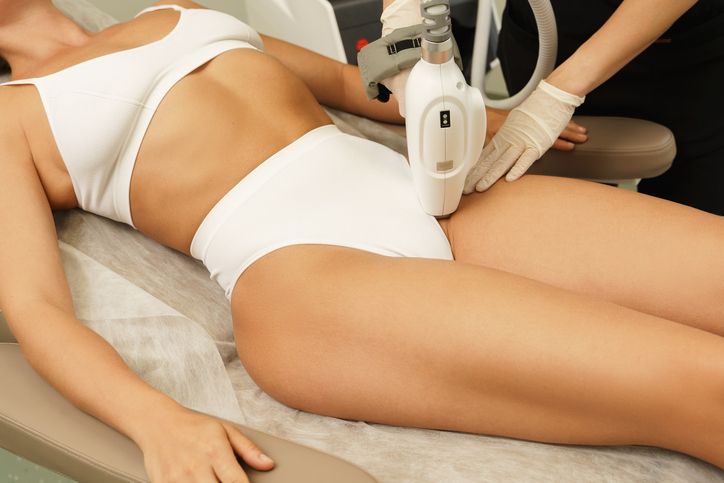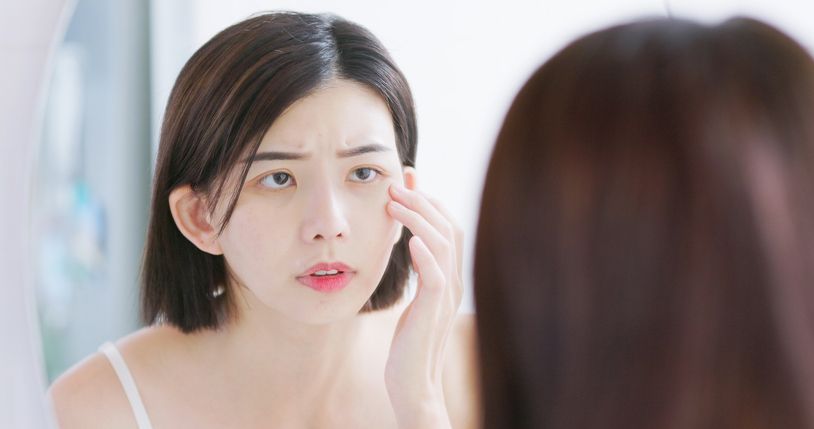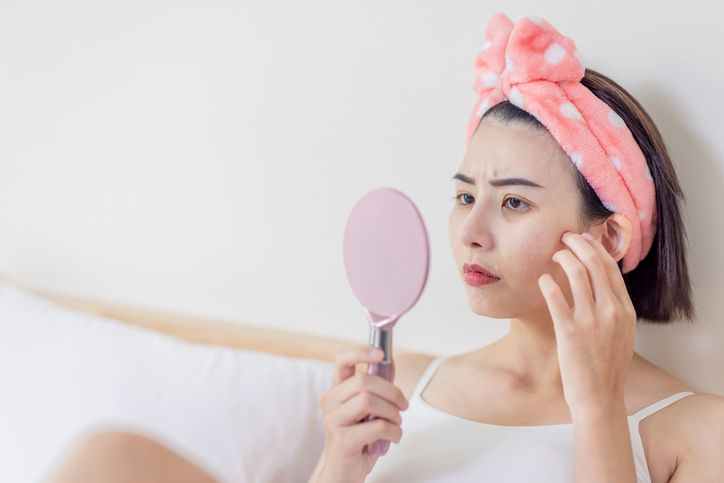- Home
- Trend
- Weight Loss Strategies
- Acne Tips
- Hair Health Information
- Blemish Removal Tips
- Acne Scar Removal Tips
- Muscle Building Techniques
- Intimate Care Tips
- Postpartum Intimate Care
- Eye Bags Wiki
- Tips for Face Slimming
- Secret of Permanent Hair Removal
- Breast Enlargement Tips
- Cure to Snoring
- Marionette Lines
- Skin-Tightening Secrets
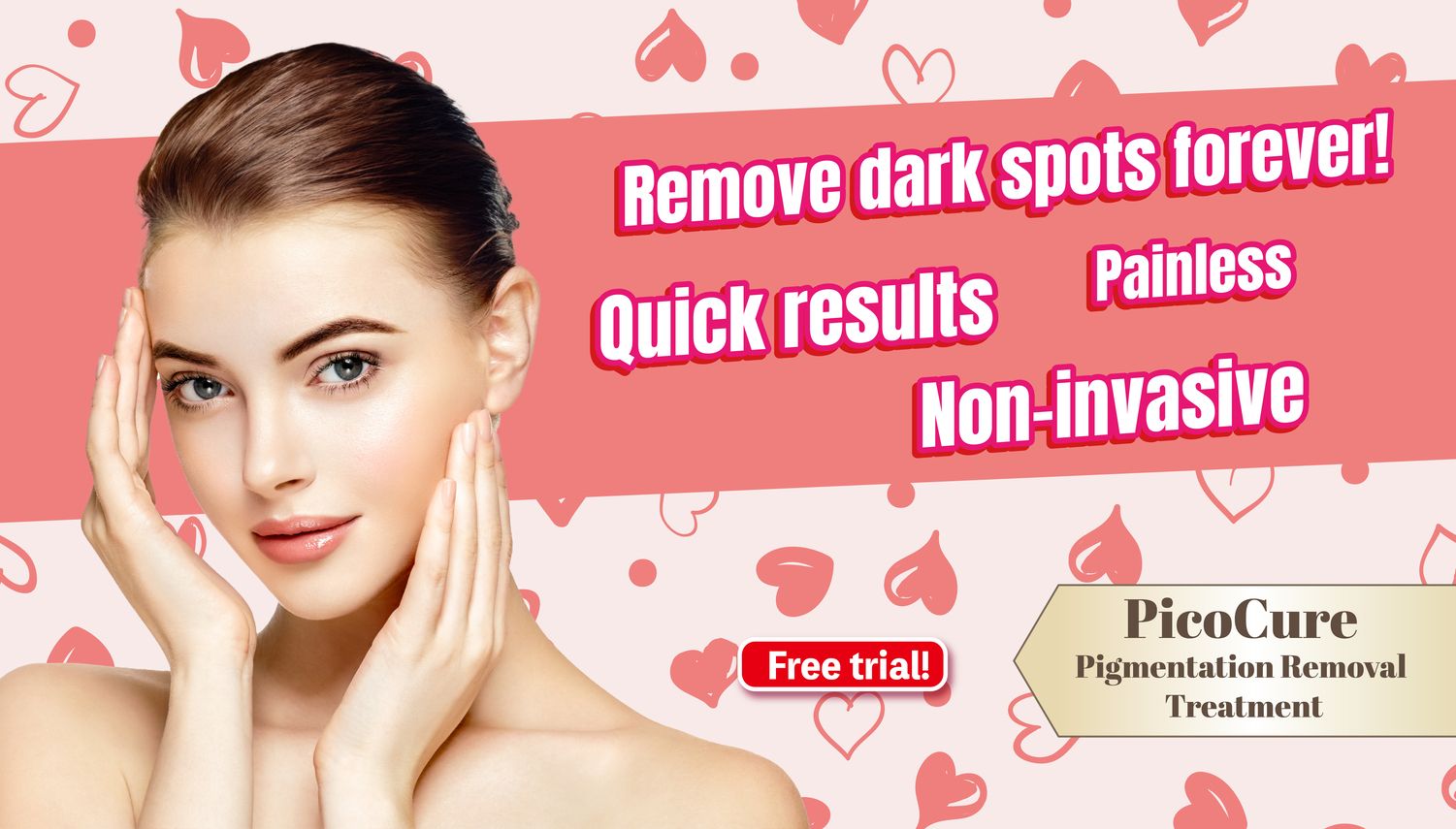
免費體驗
PicoCure Pigmentation Removal Treatment
1 Minute Self-Registration
Date should not be before minimal date
Here's the only guide you need for the causes, types, symptoms, and treatments for rosacea, a common skin condition that causes redness, flushing, acne and bumps on your face.
1
What is Rosacea? Understanding Facial Redness and Flushing

Have you ever found your face unexpectedly flushed, adorned with pimples and visible blood vessels, seemingly without reason? This could be a sign of rosacea, a chronic skin condition that mainly affects the face, leading to:
- Facial redness - Blemishes - Dilated blood vessels
Rosacea is a multifaceted condition, with a variety of underlying factors contributing to chronic facial inflammation:
Dilated Blood Vessels
A core feature of rosacea, where blood vessels expand, making them more visible and causing the skin to appear red. This may result from malfunctioning neuropeptides and vascular cells.
Overactive Innate Immune Response
Your body's defenses might be in overdrive, responding to non-existent threats and causing inflammation.
Demodex Folliculorum Mites
These tiny skin inhabitants can, in some cases, exacerbate rosacea symptoms. Their waste products or interactions with bacteria could be inflammatory triggers.
Gut Bacteria Imbalance
Emerging evidence indicates that an imbalance in gut flora may also play a role in skin inflammation.
In more severe scenarios, rosacea can lead to:
- Swelling of the nose - Ocular rosacea, affecting the eyes
Despite the absence of a cure, various treatments can help manage and control the symptoms, offering relief and improving quality of life for those affected.
2
How Many Types of Rosacea Are There?

Rosacea is not a one-size-fits-all condition; it presents itself in several distinct types, each with its unique set of symptoms, affected populations, and challenges. Let's delve into the four recognized subtypes of rosacea, shining a light on their characteristics and who is most at risk.
Erythematotelangiectatic Rosacea
Think of this as the introductory phase of rosacea, where signs are subtle yet noticeable:
- The face, especially the cheeks and central areas, experiences facial flushing and redness. - Visible, dilated blood vessels weave a delicate network across the skin. - A burning or stinging sensation may accompany the redness. - In some cases, dryness and scaling add to the discomfort.
Who's Most at Risk?
- Fair-skinned individuals and those who blush easily top the list. - Women, particularly between the ages of 30-50, find themselves more frequently affected. - A family history of rosacea? Your chances are higher.
Papulopustular Rosacea
This subtype takes things up a notch, introducing inflammation into the mix:
- Persistent facial redness marks the central face. - Small, red bumps and whiteheads dot the reddened landscape, adding texture. - The skin may feel burning or stinging, echoing the discomfort of the mildest form.
Who's Most at Risk?
- Again, fair-skinned and those with a familial connection to rosacea are more prone. - Adults in their 30s to 50s, especially women, are the primary demographic. - Notably, rosacea may intensify during menopause due to hormonal shifts.
Phymatous Rosacea
Venturing into severe territory, this type transforms the skin's texture and appearance:
- The skin, particularly on the nose, thickens, leading to rhinophyma. - A swollen, bulbous nose and uneven, bumpy skin surface become prominent features. - Visible blood vessels may persist, adding to the visual complexity.
Who's Most at Risk?
- Men find themselves more commonly affected, a departure from the previous types. - Those in their middle-aged to older years (40-60) bear the brunt. - Lifestyle factors like alcohol consumption and heavy smoking could heighten the risk.
Ocular Rosacea
This subtype brings the condition into the realm of vision, affecting the eyes with symptoms like:
- Dry, irritated eyes, complete with burning, stinging, or itching. - Bloodshot eyes signal underlying inflammation. - In more severe instances, blurred vision or sensitivity to light can occur, alongside chalazion formation on the eyelids.
Who's Most at Risk?
- Individuals with other rosacea subtypes are likelier candidates. - Middle-aged to older adults mirror the risk demographic of other types. - Existing eyelid inflammation, such as blepharitis, might escalate your chances.
3
Common Symptoms of Rosacea

The hallmark symptoms of rosacea are often visible and can affect both your skin's appearance and your comfort:
Facial Redness and Flushing
A central feature, where the face, especially the cheeks, forehead, and nose, displays persistent redness. Initially, it may resemble simple flushing or blushing, but over time, the redness can become a permanent fixture, occasionally accompanied by a burning sensation.
Pimples and Bumps
The presence of red or pus-filled bumps adds a textured dimension to the skin's surface, distinguishing it from common acne.
Eye Irritation
Sore, red, itchy, watery, or dry eyes are common, signaling ocular rosacea.
Dryness
A pervasive sense of skin dryness, beyond the norm of occasional dehydration.
Swelling
Particularly noticeable around the eyes, swelling can accentuate the tired look.
Thickening of the Skin
Primarily affecting the nose, this can lead to rhinophyma, where the nose becomes red and enlarged.
4
Less Common Rosacea Symptoms

Rosacea can also present with symptoms that are less frequently discussed but equally impactful:
Tiny Broken Blood Vessels
Visible on the skin's surface, adding to the red appearance.
Yellow-Orange Patches
Unusual discolorations that can emerge on the skin.
Sore Eyelids or Crusts
Around the roots of eyelashes, indicating more severe ocular involvement.
Foreign-Body Sensation in the Eye
Feeling as if something is perpetually in your eye.
Photophobia
A heightened sensitivity to light.
Conjunctivitis
Red, irritated eyes beyond the typical dryness or itchiness.
Blepharitis
Inflammation of the eyelid margins, often associated with soreness and crusting.
Itchy or Tight Skin
Beyond dryness, a sensation of tightness or itchiness can prevail.
Diminished Vision
In severe cases, vision can be affected, underscoring the importance of managing ocular symptoms.
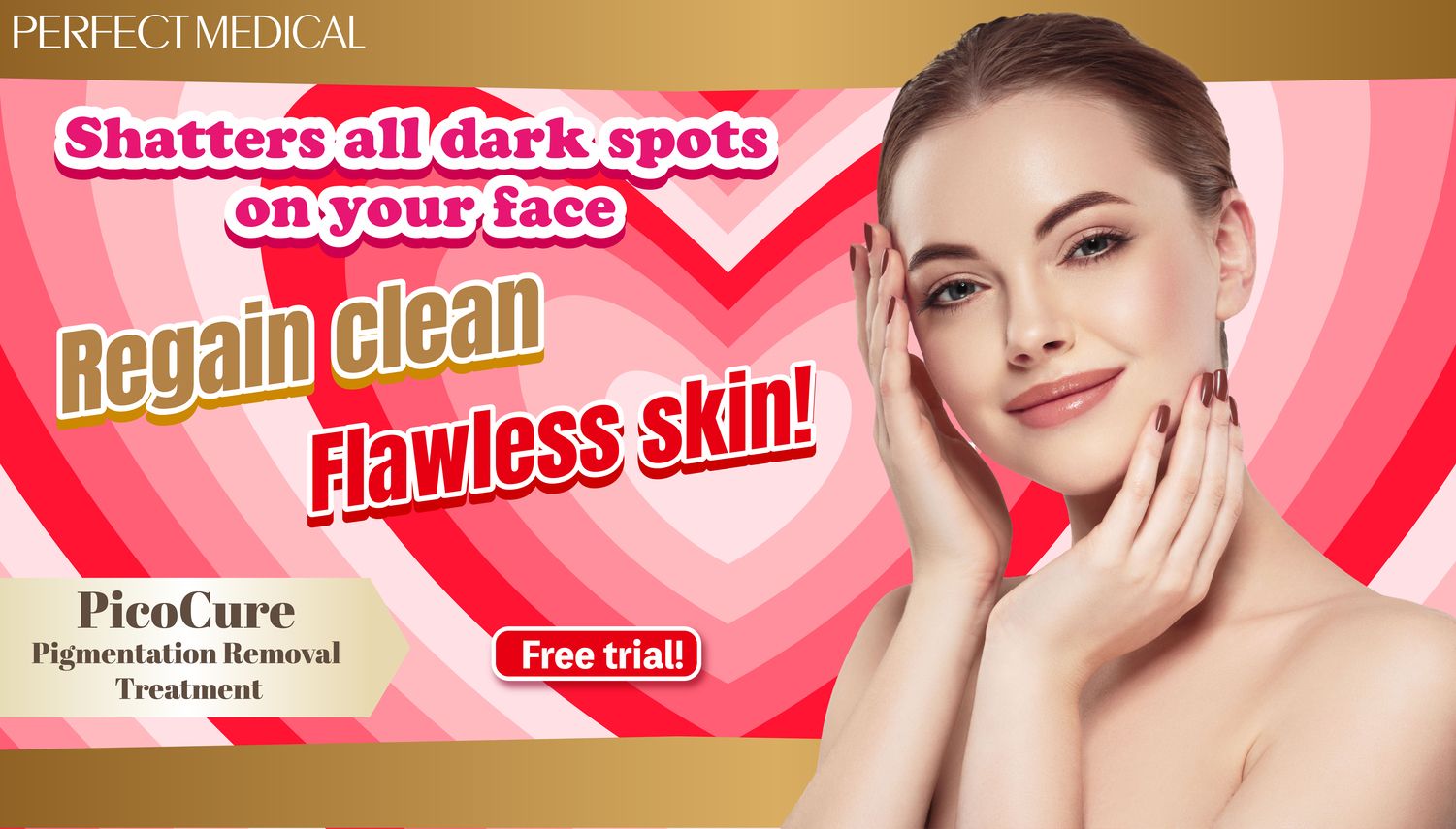
免費體驗
PicoCure Pigmentation Removal Treatment
1 Minute Self-Registration
Date should not be before minimal date
5
Possible Causes of Rosacea: A Closer Look at the Science

Rosacea, a multifactorial skin condition, remains enigmatic, with researchers striving to untangle the web of its origins and triggers. While the exact cause of rosacea is still under investigation, a combination of genetic, environmental, and vascular factors is thought to contribute to its development and exacerbation. Delving into the scientific underpinnings of these factors offers insights into why certain triggers might influence rosacea symptoms.
Genetics
Genetic predisposition plays a significant role in rosacea, as evidenced by familial aggregation studies. Genetic linkage analyses have identified several chromosomal regions associated with rosacea, suggesting that multiple genes might be involved in its pathogenesis. These genetic factors likely influence the immune system's response and the integrity of the skin barrier, making individuals more susceptible to environmental triggers.
Sunlight
Exposure to ultraviolet (UV) light from the sun has been shown to exacerbate rosacea symptoms, potentially due to UV-induced damage to the skin barrier and dermal matrix. UV radiation can upregulate vascular endothelial growth factor (VEGF) and matrix metalloproteinases (MMPs), leading to increased angiogenesis (formation of new blood vessels) and inflammation, which are hallmark features of rosacea.
Alcohol
Alcohol consumption can trigger rosacea flare-ups through several mechanisms. Alcohol metabolites may induce vasodilation, increasing blood flow to the skin and exacerbating facial redness and flushing. Furthermore, alcohol can trigger the release of histamine and other inflammatory cytokines, contributing to the inflammatory process underlying rosacea.
Spicy Foods
Spicy foods may exacerbate rosacea symptoms through the activation of transient receptor potential (TRP) channels, particularly TRPV1 and TRPA1, located on sensory nerve endings in the skin. Activation of these channels can lead to vasodilation and neurogenic inflammation, resulting in increased redness and flushing.
Hot Drinks
The consumption of hot beverages can cause a temporary increase in skin temperature, leading to reactive vasodilation. This thermoregulatory response, while normal, can exacerbate the symptoms of rosacea in susceptible individuals by increasing blood flow to the skin and highlighting facial redness.
Food Allergy
Food allergies or sensitivities can indirectly trigger rosacea symptoms by inducing systemic inflammation. Allergic reactions to specific foods can release histamines and other inflammatory mediators into the bloodstream, which may aggravate the vascular and inflammatory components of rosacea.
Stress
Stress-induced exacerbation of rosacea can be attributed to the body's response to stress, which involves the release of corticotropin-releasing hormone (CRH) and other stress hormones. These hormones can increase inflammation and blood vessel dilation, contributing to rosacea symptoms. Moreover, stress can weaken the skin barrier, making it more susceptible to environmental triggers.
Weather
Extreme temperatures can influence rosacea through thermal regulation mechanisms. Cold weather can lead to dryness and impaired barrier function, while hot weather can cause excessive sweating and dehydration, both of which can exacerbate rosacea symptoms. Wind and humidity changes can also affect the skin's moisture levels and irritation threshold.
Pollutants
Environmental pollutants, including particulate matter, ozone, and nitrogen dioxide, have been implicated in worsening rosacea through oxidative stress and inflammation. These pollutants can generate free radicals, leading to skin damage and inflammation that aggravates rosacea.
Medications
Certain medications, especially vasodilators and topical steroids, can exacerbate rosacea by affecting blood vessel dynamics and skin inflammation. Vasodilators can increase facial redness and flushing by expanding blood vessels, while prolonged use of topical steroids may worsen rosacea symptoms by thinning the skin and disrupting its barrier function.
6
Skin Care Tips for Rosacea

The right skincare routine can significantly mitigate rosacea's impact, fostering healthier skin and improved comfort. Here are some dermatologist-recommended tips to incorporate into your skincare regimen if you're navigating the complexities of rosacea.
Skincare Routine
A thoughtful, gentle approach to daily skincare can help manage rosacea's symptoms and enhance your skin's overall health:
- Cleanse Twice Daily: Opt for a gentle, sensitive-skin-friendly cleanser that removes impurities without causing irritation. Steer clear of harsh scrubs and products containing alcohol, fragrance, or menthol, which can aggravate rosacea. When washing, use lukewarm water and gently pat your face dry with a soft towel—avoid rubbing, as this can further irritate your skin. - Moisturize Daily: Rosacea often comes with the challenge of dryness. Moisturizing is key to maintaining your skin's barrier function. Select a moisturizer that is fragrance-free and oil-free, designed for sensitive skin, to hydrate without causing a reaction. - Sunscreen is Essential: Protecting your skin from the sun is crucial, as UV exposure can trigger rosacea symptoms. Apply a broad-spectrum sunscreen with an SPF of 30 or higher daily, regardless of the weather. Mineral sunscreens containing zinc oxide or titanium dioxide are less likely to irritate sensitive skin and provide effective protection.
Minimize Triggers
Understanding and avoiding your personal rosacea triggers is vital for managing the condition:
- Identify and Avoid Your Triggers: The list of potential rosacea triggers is long and varies from person to person. Common culprits include sunlight, hot beverages, spicy foods, alcohol, stress, extreme temperatures, and certain medications. Keeping a diary to note when flare-ups occur can help you pinpoint and avoid your specific triggers. - Beware of Extreme Temperatures: Sudden changes in temperature can provoke rosacea. This includes hot showers, saunas, and exposure to very cold weather, all of which can exacerbate redness and flushing. Try to maintain a moderate temperature in your environment and avoid direct heat sources.
By incorporating these skincare and lifestyle adjustments into your daily routine, you can create a supportive environment for your skin, reducing the frequency and severity of rosacea flare-ups.
7
Skincare Treatments for Rosacea
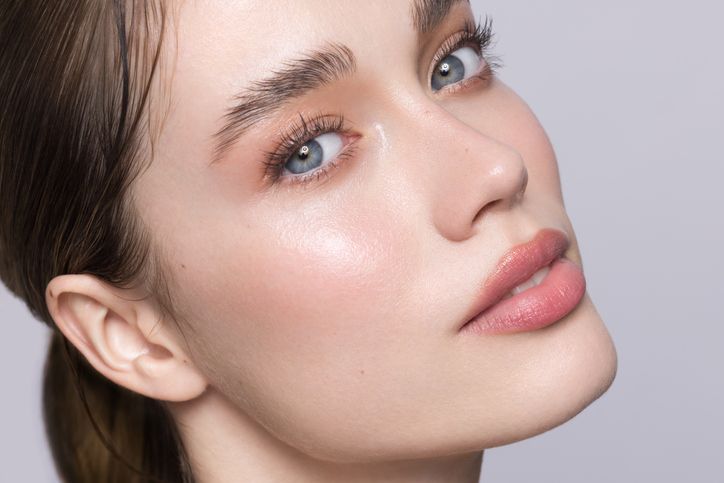
Topical products are often the first line of defense in managing rosacea, focusing on reducing inflammation, minimizing the appearance of bumps and redness, and addressing specific symptoms like pimples and flushing. Here's a closer look at some effective topical options:
Antibiotics
Metronidazole and erythromycin are two antibiotics commonly used in cream or gel form. They target inflammation and can significantly reduce the number of pimples and the intensity of redness associated with rosacea. While antibiotics can bring much-needed relief, long-term use of antibiotics can disrupt the delicate balance of good and bad bacteria on your skin, potentially leading to antibiotic resistance.
Azelaic Acid
Known for its anti-inflammatory and antibacterial effects, azelaic acid is effective in improving the overall appearance of rosacea by calming redness and reducing the occurrence of bumps. Azelaic acid is generally well-tolerated. However, it can take several weeks to see noticeable results. Some may experience mild side effects like itching or burning.
Ivermectin
This cream specifically targets the inflammatory lesions of papulopustular rosacea, reducing the number of bumps and blemishes through its anti-inflammatory and anti-parasitic actions. But beware: Ivermectin is a relatively new option, and long-term safety data is still emerging. It's also not as readily available as some other topical medications.
Brimonidine
Applied as a gel, brimonidine works by constricting dilated blood vessels, significantly reducing facial flushing and the persistent redness that can accompany rosacea. While brimonidine is fast acting, the effects are temporary, lasting only a few hours. It may also cause side effects like dryness, redness, or a burning sensation.
8
Oral Medications for Managing Rosacea

For more severe cases or those that don't respond well to skincare treatments, oral medications may be recommended:
Tetracyclines
For severe papulopustular rosacea, oral tetracyclines like doxycycline pack a powerful punch, effectively reducing inflammation and controlling breakouts. However, These medications can cause sun sensitivity, so sun protection is crucial. They may also interact with other medications and can cause side effects like nausea, diarrhea, and yeast infections.
Isotretinoin
As a last resort for severe rosacea, particularly when other treatments have failed, isotretinoin can be effective. It's a powerful medication that shrinks the oil glands to lower sebum production and has significant anti-inflammatory effects. It can dramatically improve severe rosacea. Unfortunately, Isotretinoin can bring the more serious side effects, including birth defects, severe dry skin, and depression. It requires strict monitoring by a dermatologist due to these risks.

免費體驗
PicoCure Pigmentation Removal Treatment
1 Minute Self-Registration
Date should not be before minimal date
9
Cosmetic Treatments

Cosmetic procedures can help manage rosacea symptoms, especially when it comes to visible blood vessels and persistent redness:
Light Therapy
Techniques such as intense pulsed light (IPL) therapy can help reduce inflammation and lessen the visibility of blood vessels. Still, the evidence for the effectiveness of light therapy for rosacea is mixed, and more research is needed. Also, many treatment sessions, spanning over a long period of time, might be necessary to see results.
Laser Therapy
Targeted laser energy can precisely target visible blood vessels. It can also reduce sebum secretion and stimulate collagen for a hydrated, refreshed and smooth skin texture without bumps, pimples and discoloration. Laser energy is proven to be effective in diminishing redness and erasing visible blood vessels. As for now, laser treatment is the most powerful, efficient and long-lasting method for controlling rosacea symptoms.
10
Calms Redness, Reduces Bumps & Pimples, Soothes Rosacea: PicoCure Pigmentation Removal Treatment!

Does rosacea leave you frustrated with persistent redness and uneven skin tone? At Perfect Medical, we understand the challenges rosacea presents.
Our PicoCure Pigmentation Removal Treatment uses advanced laser technology to target and diminish stubborn redness caused by rosacea. The PicoCure utilizes multiple laser wavelengths to address different depths and severities of discoloration, offering customized treatment for your unique needs.
Imagine experiencing a significant reduction in facial redness with minimal downtime. Our ultra-fast laser technology delivers precise and comfortable treatment, allowing you to see visible results after just a few sessions.
Don't wait to achieve clearer, calmer skin. Perfect Medical is offering a complimentary consultation and trial of the PicoCure Pigmentation Removal Treatment. Let our experts assess your rosacea and explore how PicoCure can help you achieve a more even and radiant complexion. Register today!
Home-Made Remedies
Some individuals with rosacea may find relief in home remedies:
- Cool Compresses: Applying cool compresses to the face can soothe skin and reduce redness temporarily. - Aloe Vera: Known for its soothing properties, aloe vera applied topically can calm inflammation and hydrate the skin. - Green Tea: Cool, brewed green tea bag compresses may offer antioxidant and anti-inflammatory benefits when applied to the skin.
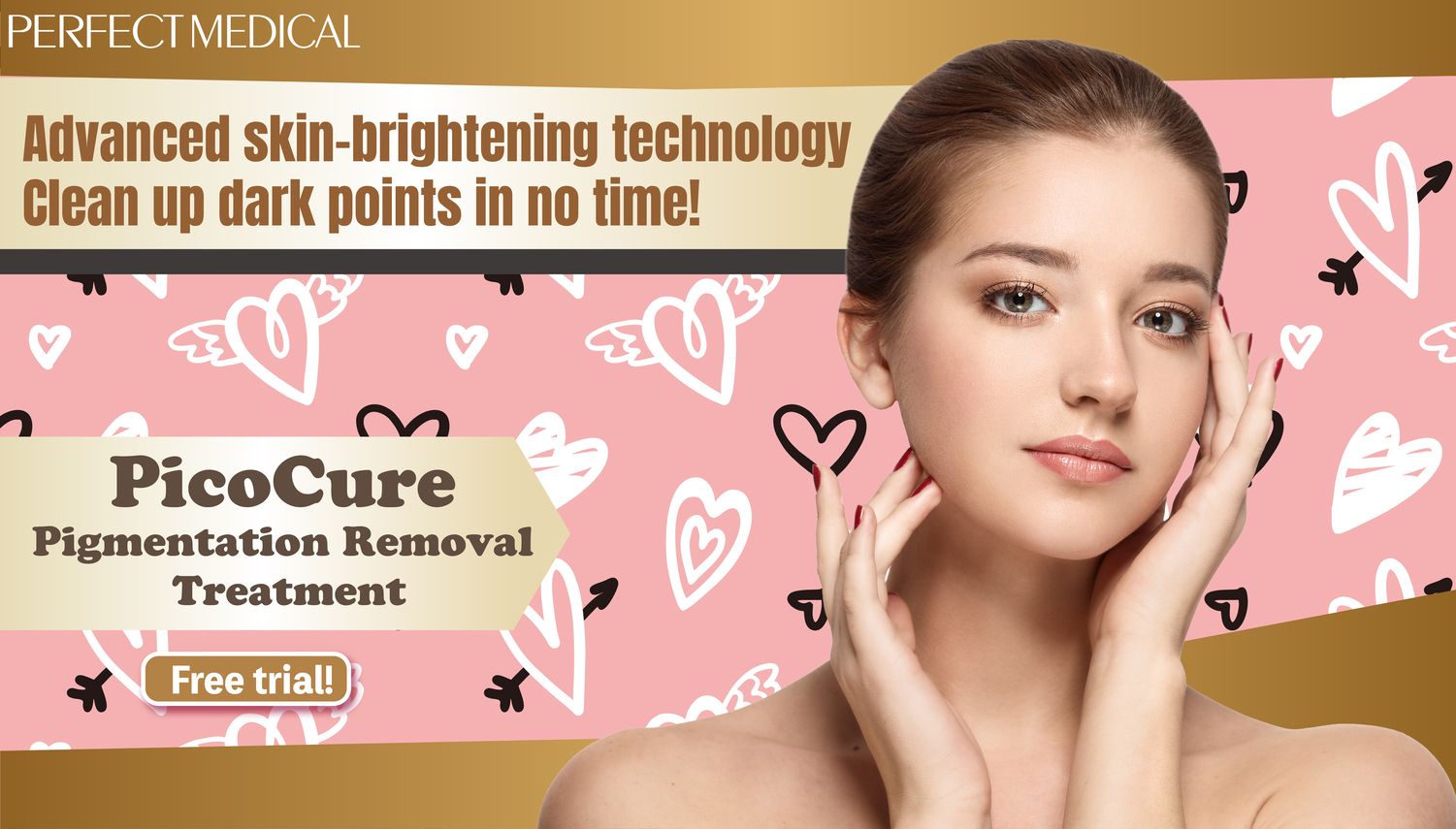
免費體驗
PicoCure Pigmentation Removal Treatment
1 Minute Self-Registration
Date should not be before minimal date
FAQ

What is rosacea?
Rosacea is a chronic skin condition characterized by facial redness, visible blood vessels, pimples, and sometimes thickened skin. It primarily affects the face and can vary in intensity over time. The exact cause is unknown, but it's believed to involve a combination of genetic and environmental factors.
Who is at risk for developing rosacea?
Rosacea most commonly affects middle-aged women with fair skin, though it can occur in anyone at any age. Factors like having a family history of rosacea, being female, and being of Celtic or Scandinavian ancestry may increase the risk.
How can I prevent rosacea flare-ups?
Avoiding known triggers is key to preventing rosacea flare-ups. This includes protecting the skin from sun exposure, managing stress, avoiding extreme temperatures, and steering clear of spicy foods, alcohol, and hot drinks. A gentle skincare routine is also essential.
Is rosacea contagious?
No, rosacea is not contagious. It is a chronic skin condition related to the immune system and vascular system, and it cannot be transmitted from person to person through touch or close contact.
Can makeup worsen rosacea?
Certain types of makeup can irritate sensitive rosacea-prone skin, potentially worsening symptoms. Non-comedogenic, mineral-based makeup free from fragrances and harsh chemicals is recommended. Using a green-tinted primer can help neutralize redness.






